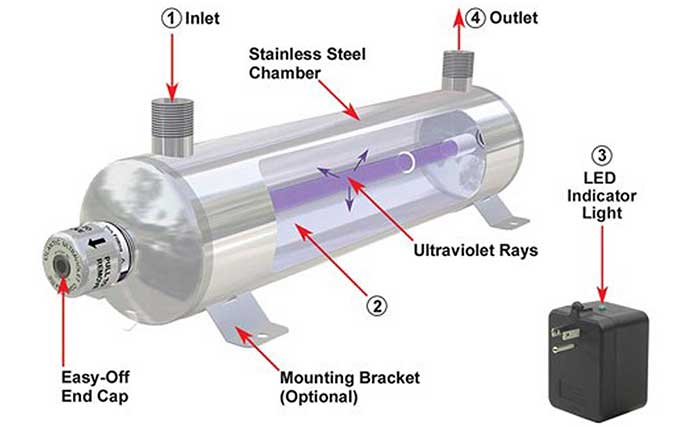Ultraviolet (UV) treatment effectively destroys 99.9% of waterborne microorganisms.
PRAB’s line of UV systems for water purification are an environmentally friendly alternative to chlorine disinfection and have no disinfection byproducts (DBP’s).
UV purification is used with other forms of filtration, such as a reverse osmosis (RO) and ozone systems and is compact in size.
PRAB Water & Wastewater is a leader in fluid waste management, ultrafiltration, wastewater reuse, and reverse osmosis pre-treatment with partnerships that span globally. Our UV systems effectively destroy 99.9% of waterborne microorganisms. Effluent water can be discharged to a sewer or reused. Systems offer a robust design which effectively removes organic impurities from a variety of different water streams for optimum fluid waste management.
PRAB’s UV systems and wastewater treatment technology will help you meet zero manifesting goals and comply with federal Resource Conservation and Recovery Act requirements, as well as state and local discharge regulations.

Ultraviolet can also be used for Total Oxidizable Carbon (TOC). These systems typically utilize thin cylindrical bulbs capable of generating UV light in the 185 nm range, placed in close physical proximity to high-purity glass tubes through which the water flows. UV light possesses considerable energy and is absorbed by compounds and organisms at most wavelengths. However, certain wavelengths are more effective due to energy and absorption characteristics so as to induce maximum effect. For example, bacteria are most susceptible at 254 nanometers (nm). At a wavelength of 185 nm, the increased energy and adsorption sensitivity of oxidizable organic compounds leads to formation of hydroxyl free radicals in varying degrees of photochemical excitement. These hydroxyl (OH-) free radicals break various chemical bonds of organics, which in turn produce chain reactions, oxidizing most organics into carbon dioxide and water, the basic building blocks of all organic compounds.
Full Spectrum Industrial Wastewater Recycling and Reuse. Cost Reduction, Waste Minimization & Environmental Compliance.
Agenda
Product Brochures
Product Brochure: Ultraviolet Technologies
White Paper
White Paper: Green Engineering
Other Downloadable Content
PRAB Fluid Filtration Solutions Product Selection Chart Brochure
PRAB Fluid Filtration Systems and Wastewater Treatment Brochure
PRAB Filtration Spectrum Brochure
PRAB Industrial Water & Wastewater Treatment Systems Brochure
PRAB Industrial Water & Wastewater Treatment Technologies Brochure
PRAB Builds Equipment for the Toughest Jobs in Manufacturing and Metalworking
Product Selection Chart Model # Flow Filtering Efficiency Application Tramp Oil Separator 3-150 gpm (11-568 lph) Coolant Guardian Coolant Recycling Systems 90-1,500 gph (341-5,678 lph) Coolant High Pressure Coolant Filters Coolant Magnetic Separator 5-265 gph (19-1,003 lph) 50-100 micron Coolant Paper Bed Filter 5-250 gpm (19-946pm) 15-50 micron Coolant/Wastewater Magnetic Separator & […]
Meet Regulatory Requirements and Achieve Cost Savings with Wastewater Treatment Technologies By Tim Hanna, Vice President Business Development, PRAB Introduction Wastewater compliance management is one of the most challenging issues facing manufacturing operations today. Steeped in dense regulatory terminology and with standards that can be distinctive to each facility, wastewater regulations can be […]
Proven to Reduce Haul-Away Costs Up to 90% Separation Spectrum Whether you need to simply separate swarf from coolant, clean wash water for reuse, or achieve clarity acceptable to your local municipality, all PRAB equipment and systems are designed for your specific application. Find your application or separation process on the chart below. Contact us […]